Project Profile
Project Location
Pawtucket and Central Falls, RIProject Lead
Groundwork Rhode IslandFunder
Doris Duke Foundation, Rhode Island Foundation, Bank of America, Amica Mutual Insurance, Salesforce, Rhode Island Department of HealthBudget
$143,000Groundwork Rhode Island planted 197 trees in the Trees 4 Us Project between May 2021 and November 2022 throughout Pawtucket and Central Falls, Rhode Island. Trees were planted on private property owned by residents and businesses and on public rights-of-way near schools. Trees 4 Us was funded in partnership by American Forests, the Doris Duke Foundation, the Rhode Island Foundation, Bank of America, Amica Mutual Insurance, Salesforce, and the Rhode Island Department of Health.
The goal of this project was to increase tree equity and climate resilience and to promote public health. In Rhode Island, historically redlined neighborhoods have just 12.25% tree canopy cover, compared to 35% in neighboring communities. Inadequate tree cover and disproportionately high rates of pavement exacerbate extreme heat in neighborhoods with fewer resources to combat it. Groundwork RI used American Forests’ Tree Equity Score Analyzer to determine eligibility for planting, prioritizing sites adjacent to or at schools, and at public housing developments.
Groundwork RI engaged residents, community organizers, and local businesses in English, Spanish and Portuguese to raise awareness of the project and rally neighbors to plan trees on their properties. Trees were planted by GroundCorp, a social venture employment program for graduates of Groundwork RI’s adult job training program, volunteers from Amica Mutual Insurance, and Green Team, a youth job training program.
Check out a snapshot of the project: Trees 4 Us Impact Summary
Every tree planting project demonstrates impacts that create a more just and sustainable future.
Human Health
Urban Heat - 12
Active Living - 6
Wellness & Mental Health - 10
Social Health - 6
Social Equity
Site Selection - 7
Community Engagement in Design - 6
Community Participation in Implementation - 8
Economic Equity - 9
Environment
Climate Action - 13
Water Quality & Quantity - 3
Habitat, Food & Wood Production - 3
Bioremediation - 0
The 17 United Nations Sustainable Development Goals or SDGs are a global call for action. These goals have the power to build a better future for everyone. Investment in this impact project drives action towards the following goals.
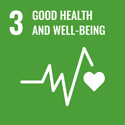
Residents of Central Falls and Pawtucket have higher rates of cardiac disease and respiratory illness than the Rhode Island state average. Trees were planted in residential areas, improving air quality and creating shade that will cool homes and protect pedestrians. Trees were also planted at key public gathering places such as public playgrounds, a basketball court in Central Falls, at or within half a mile of two Central Falls schools, downtown Pawtucket, and Central Falls Library.
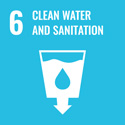
Trees were selected from the Climate and Health Species List for Rhode Island Urban Trees, prioritizing species with efficient water use that are resilient to drought and flooding. Trees planted will increase groundwater recharge, promote the infiltration of water in soils, and decrease stormwater runoff.
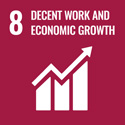
Urban tree planting projects can create economic opportunities for communities. Trees for this project were planted by GroundCorp and the Green Team. GroundCorp employs graduates from GWRI’s adult workforce training program, which provides green career pathways for people who face barriers in employment. The Green Team is a youth workforce training program for high school students.
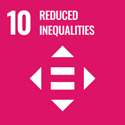
Central Falls and Pawtucket continue to feel the impact of historic discriminatory policies, environmental racism, and underinvestment. During interviews, residents shared that the lack of tree canopy was one of their biggest environmental concerns. The majority of trees were planted on people’s homes and along streets that were previously unshaded to reduce social, economic, and health disparities.
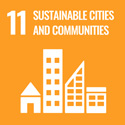
Inclusive participation in the project design and implementation was one of GWRI’s key goals for the project. To maximize their outreach across the two cities, GWRI’s community engagement plan involved partnering with community-based organizations, small businesses, and formal and informal community leaders, and collaborating with the Central Falls and Pawtucket Health Equity Zone, a coalition of social services and health agencies.
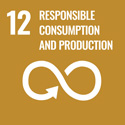
Trees lower cooling costs by reducing regional air temperatures and providing shade. They also act as a buffer against cold winds that strip away heat, thereby providing savings on the fuel needed to heat buildings. Trees were strategically planted along residential streets to provide optimum shade and wind protection, which will reduce energy usage and heating and cooling costs for under-resourced households.
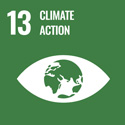
Trees and forests in and around cities contribute to climate-change mitigation directly by sequestering carbon and reducing greenhouse gas emissions. These 197 project trees will store a projected 129 tons of CO2 if maintained for 25 years. Trees planted will also improve air quality, promote stormwater capture, and reduce heating and cooling costs.
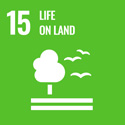
An important aspect of this project was its focus on species diversity to increase the resilience of the Central Falls and Pawtucket urban forests and create more habitat and food sources for urban wildlife. In total, 38 species of trees were planted.
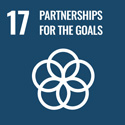
Partnerships were a key part of this project. GWRI worked with community leaders, community-based organizations, local businesses, city officials, the Pawtucket and Central Falls Health Equity Zones, schools, the housing authority, affordable housing developers, and downtown improvement districts to reach out to residents and identify planting sites throughout the city.
